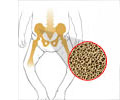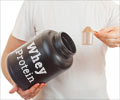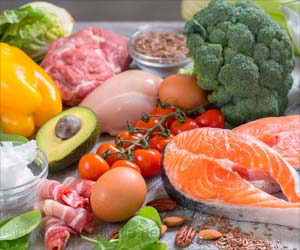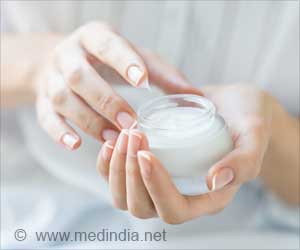The protein nanofibrils coated with iron can be easily added to different types of food without affecting their taste or smell or color.
Highlights
- Supplementing iron in the daily diet to correct iron deficiency can be tricky.
- New method of fortifying food and drinks with iron: a hybrid material made of edible whey protein nanofibrils and iron nanoparticles has been developed.
- The innovative iron food supplement does not cause any side effect and would also be a good alternative for people living in poor countries.
New Formula for Iron Fortification
The two ETH professors Raffaele Mezzenga and Michael B. Zimmermann from the Department of Health Sciences and Technology have discovered a new way of fortifying food and drinks with iron: with a hybrid material made of edible whey protein nanofibrils and iron nanoparticles.
The protein nanofibrils are formed by denaturing native whey protein by heating them to 90°C, and further hydrolysing them in strong acid until they form the final protein filaments. Several protein filaments then organise themselves into thicker protein nanofibrils.
The researchers combined these nanofibrils with iron nanoparticles which can be readily absorbed by the body. To produce these nanoparticles, the researchers mixed ferric chloride (FeCl3) directly with the protein nanofibrils in the same acid solution, creating iron nanoparticles of 20 nanometres.
Supplementing for Iron Deficiency
The new supplement was also easily digested. As the authors showed in an ad-hoc in-vitro experiment, the enzymes in the rats' stomachs entirely digested the whey protein nanofibrils. In addition, acid conditions like in the stomach dissolved the iron nanoparticles into iron ions, which can then be quickly absorbed into the blood and used to produce new red blood cells.
The iron-coated whey protein nanofibrils can be administered either in powder or liquid form, and the new compound can be easily added to different types of food without affecting their taste or smell or color.
No Reported Side effects
The researchers ran microscopic tests on the rats' brain, heart, kidney and other organs, after they had eaten the nanofibrils for 2 weeks to identify potential risks and side-effects. They were particularly interested in the whey protein nanofibrils, which have never been used in foods or food supplements before.
From a structural point of view, these structures are similar to amyloid fibrils, which accumulate in the brain and have been linked to Alzheimer's disease, but differently from them, in the present case are made out of hydrolysed edible food proteins.
The ETH researchers therefore wanted to make sure that eventually undigested protein fibres in their iron supplement do not accumulate in the body and potentially produce tissue anomalies.
"On examining the organs and tissues of the rats, we did not find any evidence of nanoparticles or nanofibrils accumulating or possibly causing organ changes", says Mezzenga.
One thing he can be sure of: "Our new iron supplement has enormous potential for successfully combating iron deficiency in an economic and efficient way".
Alternative to existing Iron Supplements
The ingredients used to make this innovative food supplement are cheap and in plentiful supply. Whey proteins are a side-product of the dairy industry. Iron salts are also cheap and readily available.
As both the process and the ingredients are easy to work with, this iron food supplement would also be a good alternative for people living in poor countries who are more prone to iron deficiency than those living in western industrialised nations.
The researchers have filed a patent for their new product and look forward discussing with commercial partners to develop the technology further.
Reference
- Raffaele Mezzenga et al., Amyloid fibril systems reduce, stabilize and deliver bioavailable nanosized iron, Nature Nanotechnology (2017) http://dx.doi.org/10.1038/nnano.2017.58.
Source-Medindia














